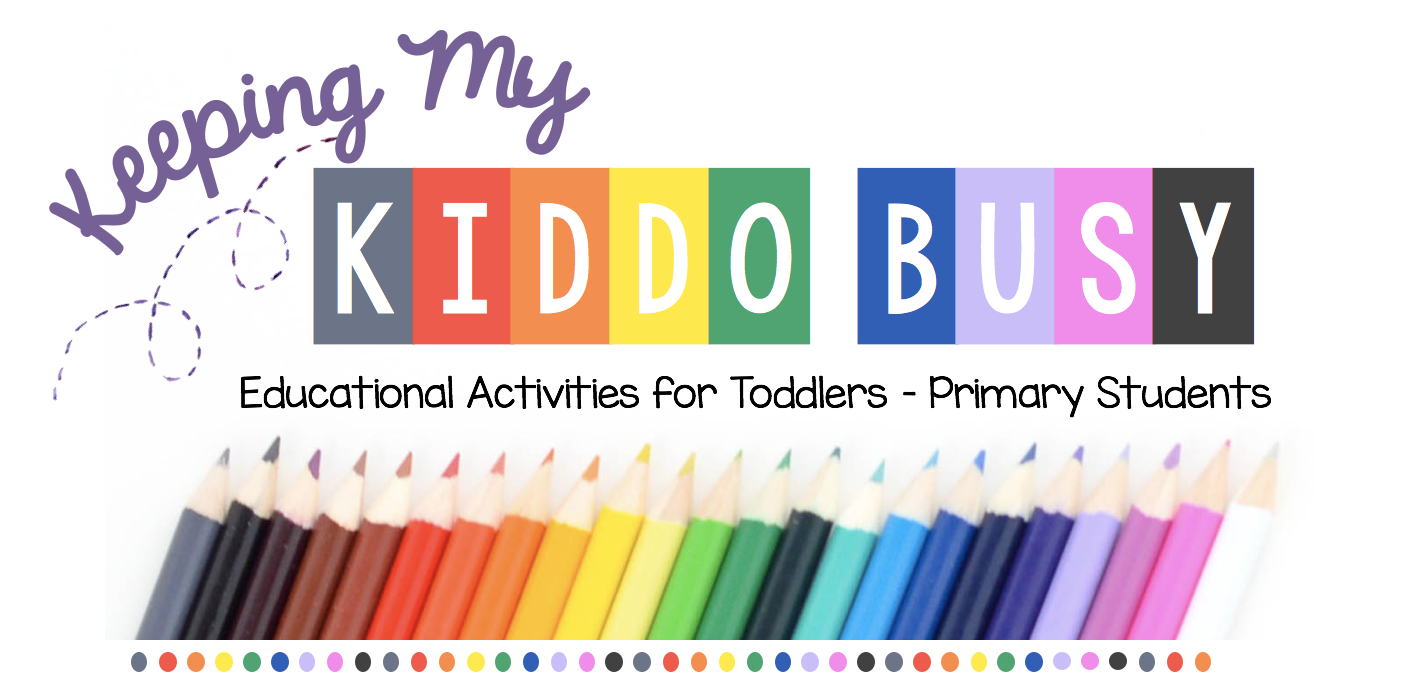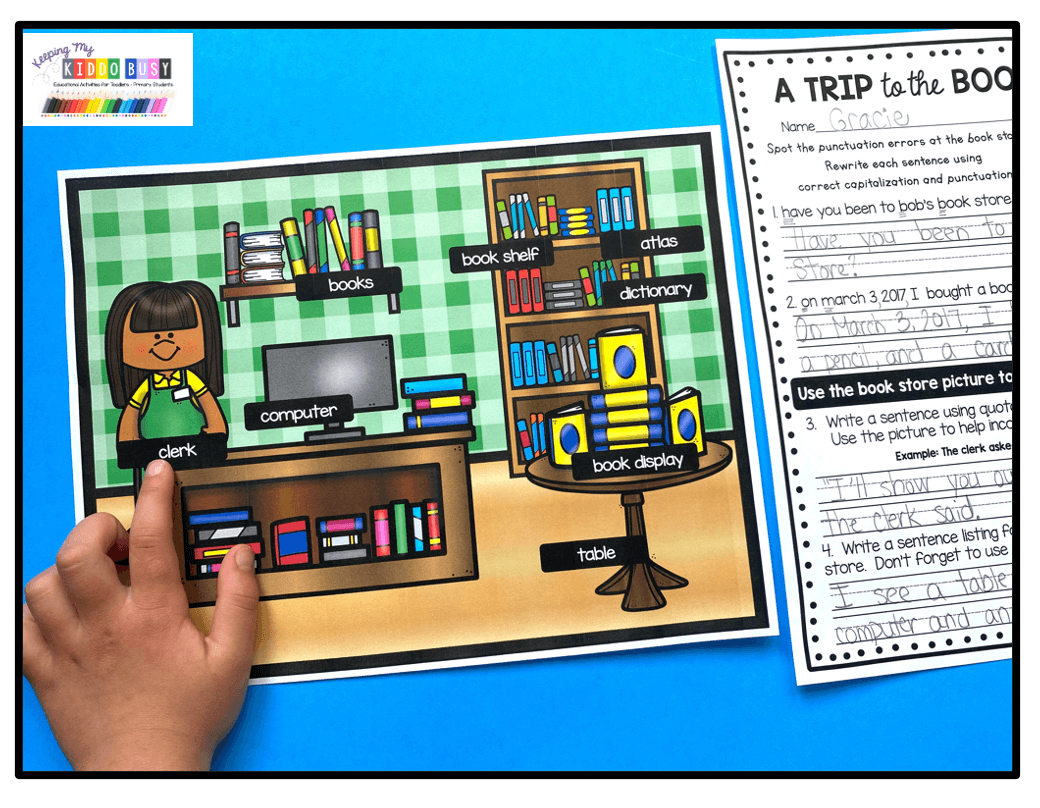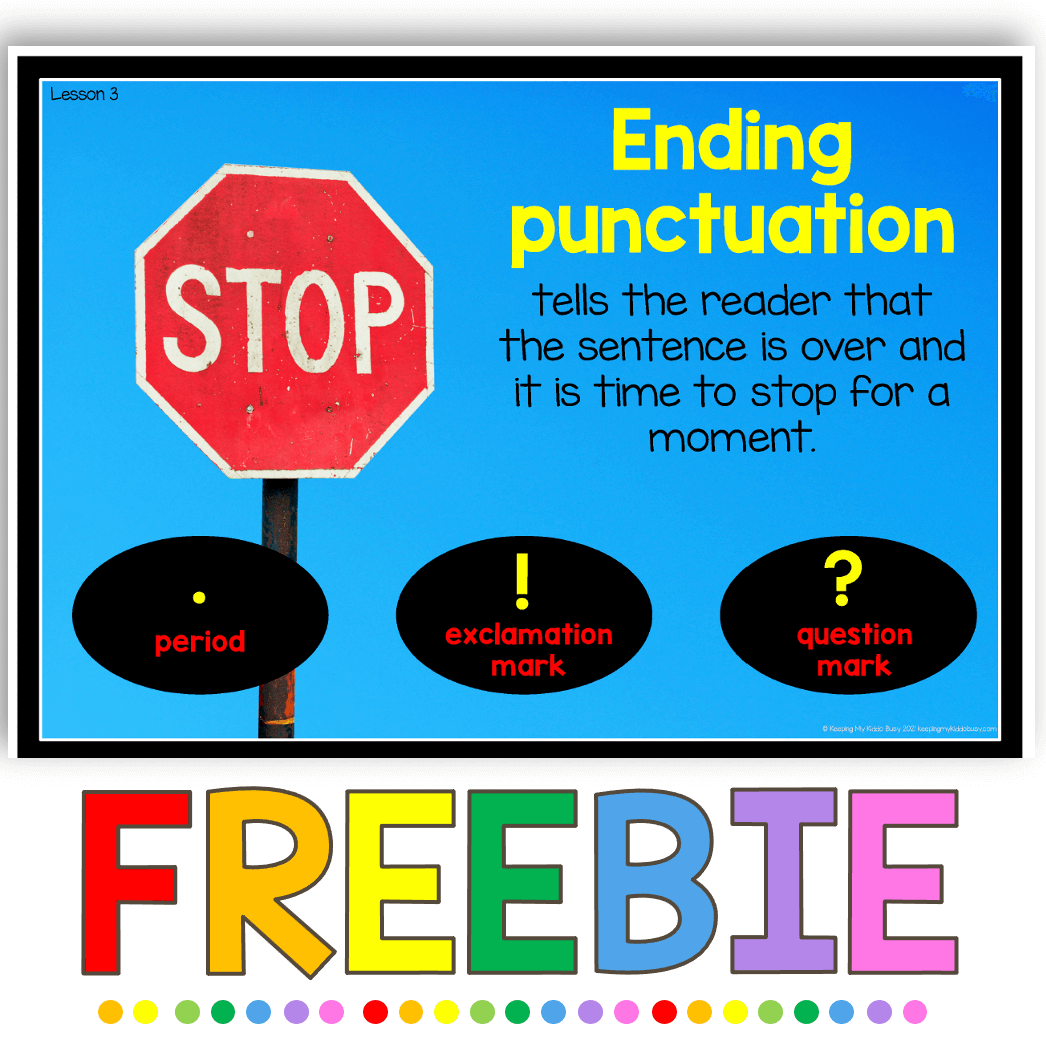Primary Grammar - How to teach students correct punctuation FREEBIES
PRIMARY GRAMMAR UNIT 6 - PUNCTUATION
We completed our grammar units 1-5, nouns, adjectives, verbs, adverbs, and capitalization.
Who knew grammar could be so easy and fun right?
These first five units give students such a solid foundation of basic sentence structure and parts of speech. Now that they have this strong framework of understanding, we move on to other grammar rules.
Unit 6 is all about basic punctuation rules, specifically ending punctuation, commas, quotation marks, finding the subject and predicate, and fixing run on sentences.
This unit is intended for kindergarten - 3rd grade, so we do not cover every single rule, but we master the basic guidelines for punctuation.
This page contains affiliate links. Read Full Disclosure
“I am always so eager when the next grammar unit comes out! This one is like all the rest, and includes so many visuals and activities that engage all my students. Students of all abilities are able to participate. The lessons build on each other and are easy to follow and implement.” - review from Adjectives Unit
“Another excellent grammar unit that has everything I need and easy to prep. I was able to use immediately and my students were highly engaged and enjoyed the learning activities. Thank you!” - review from Verbs Unit
In lesson one, I introduce the five main types of punctuation we learn about in this unit.
The adorable anchor charts come in color and black and white. You can add the black and white versions to student grammar packets for them to color if you wish.
Then we make adorable flip books that have examples of each type of “punctuation pal”.
How cute are these punctual pals?!
We continue to practice these five punctuation marks with this adorable mini book. Students can trace the definitions and color the pages, and it also comes in a colored version.
Keep this mini book throughout the unit and students can buddy read it each day as a warm to practice the definitions and their fluency.
In lesson three we tackle ending punctuation. This picture slideshow makes your lessons a breeze!
Then, students can complete the cut/paste sort shown on the far right. They simply cute out each sentence at the bottom and sort it into the correct column based on what kind of ending punctuation it has.
In lesson 4, we continue to practice ending punctuation with these two worksheets. Just copy front to back and you’re set! Student must apply what they learned in yesterday’s lesson and they write in the correct ending punctuation.
This is usually pretty quick and easy for students to complete.
Now we are ready to tackle commas! Commas can easily feel overwhelming to teach, but by breaking them down into specific rules, commas really aren’t hard to teach.
We will be practicing commas for the entire unit, and you’ll be amazed at how well students do with these structured activities.
The next few lessons follow the same format. This makes it so easy for you and students!
This is our routine:
slideshow explaining the punctuation/rule
color the bubble worksheet - correct/not correct
rewrite the sentence with correct punctuation worksheet
cut and sort - correct/not correct use of punctuation
This provides students with multiple opportunities to practice a specific punctuation mark with meaningful activities.
We repeat this set of activities with each new grammar topic in this unit.
For teaching commas in dates, we also do a color the wrench activity based on whether the commas are used correctly.
You’ll love how easy your lessons are when you don’t have to explain directions.
You and students simply focus on the content each day, and students can get right to work since they recognize the format.
Quotation marks can be tricky, so I model quite a few examples on the board.
Students love it when I use their names in examples and make them say silly things. Jessie said, “I have a tortoise named Ted, and he slept in my bed!”
This will keep them super engaged and they can’t wait to see who gets to use quotation marks next in the example.
It is time to change up our lessons!
I love applying grammar “rules” to real life situations and help children understand that we use grammar every single day.
Children love to play “grocery store” so that is what we do for the next couple of lessons.
Each day is labeled with a date in the top right corner. We will be writing sentences to tell what Pam gets at the grocery store each day.
This targets writing sentences with correct punctuation - specifically ending punctuation, capitalization, commas in dates and commas in a series.
Students can look at the picture to see what is on the counter, and I also provide scaffolding by listing what Pam got on the note in the bottom left hand corner of the slide.
I always have a few students who are very worried about spelling every word correctly, and I don’t want that to impede what I am really targeting in this lesson - grammar.
I spend two days (lessons 11 and 12) on this activity (or more if the kids absolutely love it!) What works well for me is modeling whole group first. We do pretend trips to the store, and I just write what students tell me on the board.
For example, “On Monday, March 5th, Joe bought Cocoa Puffs, oranges, and chicken nuggets.”
They love this of course because their names and “grocery lists” are written on the board. I am modeling capitalizing proper nouns (we learned about capitalization in our last grammar unit), using commas in dates and in a series, and ending punctuation.
Then, the next day we review by doing Pam’s trip on Monday together and I let them complete the week on their own to check for understanding.
Tip: if you’re using this activity in a literacy center, print the picture slides with Pam’s daily trip and laminate them. If you’re doing this activity whole group, project the slides on your front board.
Since they loved making their own grocery trips up - that is what we do now!
We complete one grocery trip each day for the next five days.
How cute are these little grocery carts? I love this activity because everyone’s will look a little different.
Eight items are included on the page, and they choose the five they want. They glue the items they choose into the boxes on the cart and then write a sentence.
This is very similar to the previous lessons (Pam’s shopping) so we are just reinforcing the grammar skills while having fun creating mini trips to the store.
Students love to share and compare with their neighbors, “What did you buy today?!”
If you do one activity each day, these printables will span five straight lessons.
You’re providing so many opportunities for students to practice the skills we are learning without introducing a new format. I love watching their confidence sky rocket!
It is time to switch it up a bit, and these next lessons are so fun.
We go to to the book store, candy store, tool store, shoe store and of course… the toy store!
I generally do the first one all together, and let students complete the next four on their own.
Show students the colorful slide, and then they work through and fill out their coordinating activity page.
Students are working on all the grammar skills taught in this unit. They need to identify the errors in the sentence, correct them and then rewrite the sentence.
On the bottom half of each page, they use the slides and vocabulary words to create their own sentences with correct quotation marks, capitalization, commas and ending punctuation.
It is fun to see everyone come up with different ideas.
We are nearing the end of our unit, but the last thing we focus on in this unit are run on sentences.
This is such a common issue, but it is also easily remedied.
In our first grammar units, we learned about nouns and verbs. I remind students that all sentences need is a subject (noun) and predicate (starts with a verb - what does the subject do?)
Before we do our activity pages, I model first with the whole group. I show the slides above to explain what a subject and predicate is.
A complete sentences needs both of these things, and this builds on their previous knowledge about nouns and verbs.
We practice together and then move on to our pocket chart sentences shown below.
Each page prints with one long run on sentence, but also comes with punctuation marks to add as well as capitalized words for the beginning of each sentence.
What I do:
Create a long run on sentence first
Ask students what the first subject is (we)
Ask students what the first predicate is - just find the verb (went to the zoo)
Then ask what ending punctuation should go after the predicate.
Now that you have a complete sentence, add the capital letter to the first word in the sentence (I just place the card over the original word)
Repeat for sentence two, and you end up with two simple sentences with correct punctuation!
If you let students “guess” where each sentence ends, sometimes they get it right, sometimes they get it wrong.
I prefer to have students follow very specific steps that actually review what we learned in previous units.
Tip:
I sing songs/chants to help students remember subject and predicate.
Subject: who or what is the sentence about? (repeat in chant)
Predicate: what do they do? (repeat in a chant) - the first word in the predicate is always the verb.
I add a little chorus to each, but I just made it up!
Also, write the steps above on the board so they can’t say “I don’t know!” because then I can say, “Which step are you stuck on?” This gives them ownership of their learning.
I do two of these pocket chart sentences each day, and then students do two worksheets each day as well so they can practice on their own.
I start the lessons with the pocket chart run on sentences to do together, and then they each get two of these Split into Sentences pages (copy front to back.)
I put the steps at the bottom of each page to remind them to find the subject and predicate of each sentence before splitting them.
They learn so much with these activity as we are practicing so many language skills.
You can do one each day to split these activities over ten lessons, or two each day to condense them to five lessons.
WATCH A QUICK VIDEO OF THIS COMPETE GRAMMAR UNIT
Read the reviews over on TPT!
“I thought my kids might struggle with punctuation, but this resource was the perfect support! My kids loved the pages and visuals and I can see the difference in their writing. They are also excited to point out punctuation in their reading.”
“Another excellent unit! My son loves how much fun they are and I love just how much it is teaching him. I also plan on using these units next school year with my kinder.”
“I love how engaging these resources are and how they follow a typical pattern because it is super helpful once kids get used to how the resources flow and are able to go from one unit to the next without difficulty. The slideshow and other images are detailed and able to be used to target other goals as well so thank you for including these!”



























